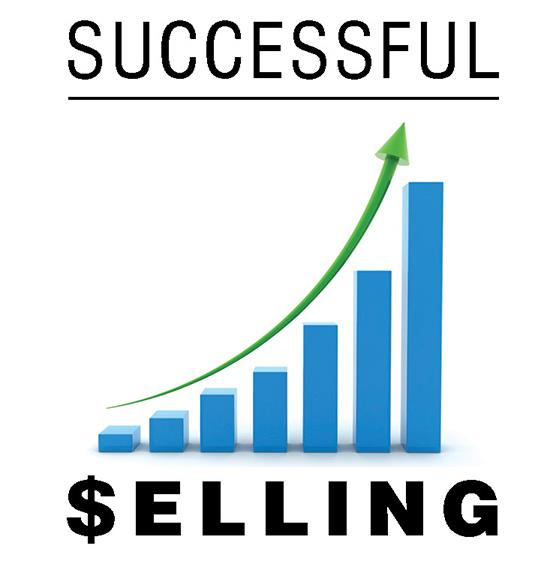Successful Selling: Crafting a memorable sales presentation - June 2022
By Sandy Smith
When I was first starting out in business, I had a lesson I never forgot. If that lesson had a title, it would be “Ouch.” I had grown up in a large, dysfunctional family, so I entered graduate school to become a family therapist. I thought I would gain insight into my family’s dynamics and be able to help others in similar situations. Eventually, I gained several clients. One, a very successful businessman who owned his own company, told me on one of his visits that his company was having its annual national sales meeting at The Peabody Hotel in Memphis, Tennessee, and he asked if I would be willing to fly to Memphis and give a presentation at that meeting.
After agreeing to speak, it suddenly dawned on me that I had been trained as a family counselor, and I knew little to nothing about the business world. I was on thin ice when it came to sales and marketing, operations, leadership and management. More importantly, I had virtually no experience in delivering a formal presentation in front of a large audience. For the next two-and-a-half weeks, I researched my topic of “Leading in Challenging Times.”
Finally, the day came. I flew to Memphis, got a taxi to my hotel, and was introduced to an audience of 200 successful businessmen and women. At the end of my presentation, I received polite but light applause.
For the next couple of weeks, I wondered what the audience thought about my presentation. Then, I received a packet in the mail from the gentleman who’d invited me to speak at his conference. I was eager to finally get some feedback on my performance. I excitedly began to read a series of personal comments from my audience:
• “This gentleman’s presentation was worse than a three-hour break.”
• “Mr. Smith needs to find a different line of work.”
• “Where on earth did our boss find this guy?”
• “Talk about an unconscious incompetent.”
There were no positive comments on the three-page list. Talk about a depressing experience.
Much later, I realized the major mistake I had made. After being invited to speak at the conference, I spent my entire time preparing my presentation content and little to no time on understanding my audience.
Several months later, I was introduced to an executive coach, who trained men and women in persuasive presentation skills. This memorable experience changed my life and eventually led to my successful career as a professional speaker.
Many of today’s leaders spend a good percentage of their time giving presentations to one audience or another. The audience may include employees at an all-hands company meeting, the organization’s board of directors, or representatives at a national industry conference. While some of these speakers have never taken a public speaking course, others have learned the art and science of giving effective presentations. They have learned to customize their presentation to the unique needs of their audience. Many of these leaders are skilled at engaging their audience and promoting lively interaction with them and each other.
For just over the last 25 years now, I have had the privilege of being a keynote speaker at major trade shows and conferences, but I have also been an executive coach, training leaders, managers and sales teams in delivering memorable presentations. Somewhere along the way, I recognized that audiences are typically composed of three categories: men and women who are excited to be in attendance and looking forward to the presentation; others who are fairly neutral about the subject but are willing to listen; and those who are unwilling to make time, are dreading the experience and who may be present only because they are required to attend by their company or manager.
For several years, I made the mistake of focusing on those who were negative and did not want to be there. One day, it finally occurred to me that the reason I felt so emotionally exhausted at the end of my presentations was because I was trying to get those with a negative attitude to change their minds-which was highly unlikely. By changing my focus to the participants who wanted to be there or at least were open-minded, my energy was renewed and my presentations more successful.
Over the years, I have gotten calls from clients inviting me to speak at a conference or national sales meeting. Those clients were from various business sectors, such as healthcare, engineering, science, manufacturing and sales and marketing. Regardless of the client’s affiliation, I have a checklist and series of questions I ask myself to ensure my delivery meets the audience’s needs and expectations, and we experience a win-win outcome.
1. Is my content current and practical, cutting-edge and innovative as it relates to my audience?
2. In what way am I uniquely qualified to address this topic?
3. Is my subject matter grounded in research?
4. Is my presentation customized to the learning level of my audience, i.e., college level 101 basics or 301 advanced?
5. Do I have specific learning objectives and real-world tools the audience can take away?
6. What are the ideal outcomes resulting from my presentation?
Preparing for each particular audience is critical to accomplishing a successful outcome. That, and remembering this sage advice:
• The best presentations have a great opening and closing; and those are very close together.
• The last thing you say or do will be the first thing your audience remembers.
• Most speakers don’t close, they run out of time.
Copyright 2022 Floor Focus
